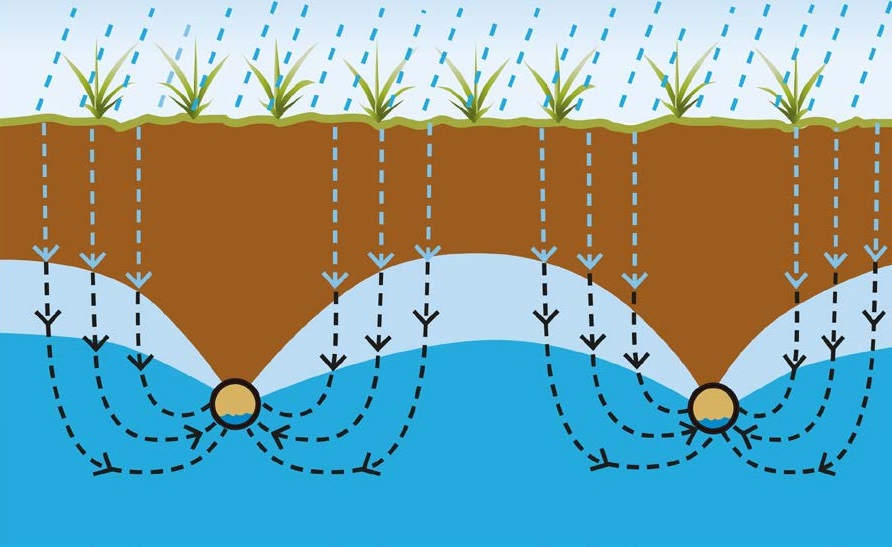Nitrogen management in poor-condition crops after high rainfall
Wednesday, 10 April 2024
AHDB has published final excess winter rainfall (EWR) data to help farmers fine-tune nitrogen applications in cereals and oilseed rape.
Extreme rainfall during the full EWR period (October to March) means that almost the whole of the UK has been categorised as having high EWR, which means that more nitrate is likely to have leached into drainage water.
With crop condition also relatively poor, nitrogen plans will need careful refining, with fertiliser rates adjusted to reflect expected yields.
What is EWR?
EWR is the amount of rainfall the land receives after the soil profile becomes fully wetted in the autumn (field capacity) and before the end of drainage in the spring. It can be used to indicate how much nitrate has leached into drainage water.
AHDB uses Met Office data to map EWR across the UK (199 40 km by 40 km grid) using three categories:
- Low: less than 150 mm EWR
- Moderate: 150 to 250 mm EWR
- High: over 250 mm EWR
Two map types are created: for bare soil and for cropped land. The latter maps (for winter wheat, winter barley and winter oilseed rape) account for water lost through the crop.
The EWR categories correspond to three look-up tables in section 4 of the AHDB Nutrient Management Guide (RB209), which can be used to estimate a field’s soil nitrogen supply (SNS) index and nitrogen rates.
In addition to rainfall, RB209’s look-up tables also consider the impact of soil type and the previous crop on soil nitrogen supply. Table 4.5 in Section 4 provides the SNS indices associated with high excess winter rainfall.
Weather impact
The last extremely wet EWR period was the 2019/20 winter, with the current (2023/24) EWR period registering an even worse set of results.
Relentless low-pressure systems led to widespread saturated ground and flooding. Even when the interim results were issued in early February (based on October–January data), many UK regions were already in the highest EWR category.
February delivered another very wet month, especially across the southern half of the UK, with some areas breaking rainfall records. March was also wet. Once again, rainfall was heaviest towards the South.
In the final figures for the 2023/24 EWR period, every part of the UK is now in the highest EWR category in uncropped (bare soil) scenarios.
Even when cropped with winter wheat, only one of the 199 squares (in the South East) drops from the highest to the moderate EWR category, with results for winter barley and winter oilseed rape only marginally better.
Historically drier areas have seen the largest changes to the EWR categories, with several areas jumping up from the lowest to the highest EWR category compared to long-term average categories (as shown in Figure 1, up by 2).
Change in EWR category
.JPG) AHDB
AHDB
Figure 1. Changes in EWR categories in winter wheat for the October 2023 to March 2024 period compared to the long-term average (1981–2010).
Nitrogen adjustment
Emma Willis, who manages nutrient management research at AHDB, said: “When calculating nitrogen rates, it is important to consider factors that could limit yield in addition to potential nitrate losses.
“The terrible weather means the condition of many crops is suboptimal, with restricted rooting a concern. Poorly rooted crops can appear pale or yellow, especially under continued saturated soil conditions. This is more likely due to the crop’s inability to access nitrogen, rather than nitrogen availability. It is important to adjust nitrogen rates to reflect yield potential. Where crop yield is limited, it may be necessary to reduce nitrogen rates.”
RB209 includes a method to adjust nitrogen in response to expected yields. In winter wheat, for example, this is above or below a benchmark yield of 8 t/ha.
For low-yielding winter wheat crops, RB209 recommended rates are reduced by 10 kg N/ha for each 0.5 t/ha reduction in expected yield.
To plan nitrogen applications, use the nitrogen calculator, follow RB209 guidance and access the EWR maps on the AHDB website.



